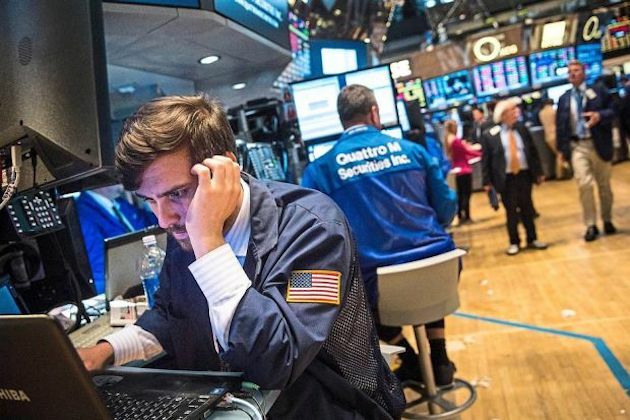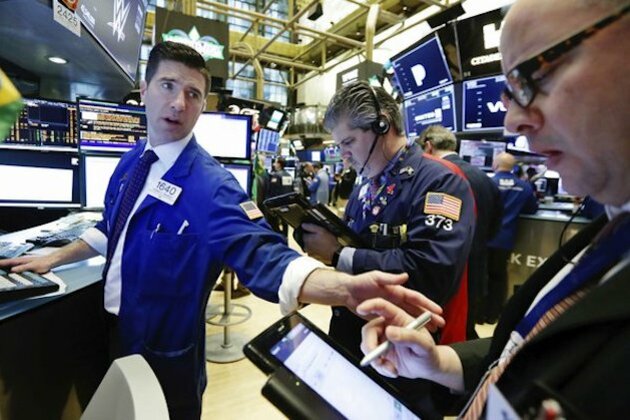Revisiting Taylor's Rule: The Fed, Inflation, and Linear Modeling
Business Sun
10 Jul 2023, 05:30 GMT+10
The Federal Funds Rate, often referred to as the "Fed Prime Rate," is the interest rate at which depository institutions (such as banks and credit unions) lend reserve balances to other depository institutions overnight [1]. In fact, the "Prime Rate" is different from the "Federal Funds Rate," though they are confused frequently by the media [2]. The Federal Funds Rate is established by the Federal Open Market Committee (FOMC), a component of the Federal Reserve System [3]. The prime rate is the rate that banks charge their most creditworthy customers [4]. When the Federal Reserve increases the Federal Funds Rate, it becomes more expensive for banks to borrow money. This increased cost reduces the demand for loans at every level of creditworthiness and decreases the velocity of money in the economy [5]. Higher interest rates can make savings accounts and other fixed-term interest-bearing investments more appealing than riskier investments like stock or loans, potentially drawing money away from these instruments towards bonds and savings accounts [6].
The Fed does not employ a particular formula for rate-setting, but the existing approximations need mathematical scrutiny. The Taylor Rule relates inflation rates to target rates and the real and potential output of an economy [7]. It is a linear function i(r, p, y) = r + p + 0.5 * (dp + dy), where r is the equilibrium fed funds rate, dp is the difference between the observed and desired inflation rate, and dy is the difference of the log real and log potential outputs [7]. The formula assumes that fed policy and tax policy are segregated and that ideal and actual economic output are calculable [7]. One can make statistical approximations for each of the terms, but the errors are potentially egregious. The equal weight of 0.5 given to dp and dy is potentially not mathematically defensible in light of the interplay among interest rates, energy prices, and local tax rates as represented by the Laffer Curve.
Put succinctly, the Laffer Curve is a theoretical representation of the relationship between tax rates and the amount of tax revenue collected by governments [8]. The curve suggests that increasing tax rates beyond a certain point is counter-productive for raising further tax revenue [8]. The Laffer Curve is primarily used to illustrate the concept of taxable income elasticity-i.e., taxable income will change in response to changes in the rate of taxation [9]. If a government decreases tax rates with the goal of stimulating economic activity (a move suggested by Laffer Curve principles for certain situations), this could potentially lead to increased aggregate demand for goods and services, changing the values of dp and dy in the Taylor Rule.
High inflation might make a government consider tax rate adjustments to decrease aggregate demand and consumer price indices, but such decisions would also need to consider the trade-off with tax revenues as suggested by the Laffer Curve [10]. In this situation, the Taylor coefficient of 0.5 would only provide a crude approximation for the weight of dp. One reason for this effect is the fact that government spending rarely decreases with falling tax revenues [11]. From an inflationary perspective, it may be possible to temporarily "tax oneself into prosperity" by avoiding an ascent into inflationary spirals presented by firms' extra expenditures on capital. Because the short horizon holds diminished purchasing power for constant cash reserves, high inflation rates present an immediate opportunity cost to firms that hold cash [12]. The Taylor Formula doesn't account for this nonlinearity.
Another weakness in the Taylor Formula is that changes in the federal funds rate can affect the cost of American imports and exports in nonlinear ways. If the rate increases and strengthens the U.S. dollar, imports become cheaper (since more foreign goods can be bought with a strong dollar), but exports become more expensive for foreign buyers [13]. Conversely, if the rate decreases and weakens the U.S. dollar, imports become more expensive, but exports become cheaper for foreign buyers [13]. The federal funds rate can influence the value of the U.S. dollar against other currencies, which is not accounted for in the dp term of the Taylor Rule. When the Federal Reserve raises the federal funds rate, it can attract foreign investors seeking higher returns, which can increase demand for the U.S. dollar and subsequently strengthen its value more than changes in domestic inflation can dampen it.
Conversely, if the Federal Reserve lowers the federal funds rate, it can reduce foreign investment in the U.S., which can decrease demand for the U.S. dollar and weaken its value more than domestic deflation can increase it. One prominent mechanism by which this process may occur is in the denomination of crude, which heavily influences the production possibility frontier in a manner that is not reflected in the uniform 0.5 coefficient for dp and dy. If the rate increases and the U.S. dollar strengthens, oil - which is typically denominated in U.S. dollars globally - can become more expensive for countries with weaker currencies [14]. This can decrease demand for oil, potentially lowering its price in a non-uniform way across global futures and energy exchanges [15]. If the federal funds rate decreases and the U.S. dollar weakens, oil can become cheaper for countries with stronger currencies, potentially increasing demand and raising its price [14]. Because these countries and their citizens are holders of American sovereign and corporate debt, there is a strong relationship between the interest rates offered on fixed-term debt instruments (set indirectly by FOMC decisions) and the ideal production capacity of the economy [16].
Works Cited.
https://medium.com/@jonathanjkenigson/taylor-rule-and-inflation-sources-ead6c9aa7ab4 Share
Share
 Tweet
Tweet
 Share
Share
 Flip
Flip
 Email
Email
Watch latest videos
Subscribe and Follow
Get a daily dose of Business Sun news through our daily email, its complimentary and keeps you fully up to date with world and business news as well.
News RELEASES
Publish news of your business, community or sports group, personnel appointments, major event and more by submitting a news release to Business Sun.
More InformationFinancial Markets
SectionSwiss National Bank responds to strong franc and US trade doubts
ZURICH, Switzerland: The Swiss National Bank (SNB) lowered its key interest rate to zero percent on June 19 to respond to falling inflation,...
Amazon’s Zoox unveils plan to build 10,000 robotaxis a year
HAYWARD, California: In a significant step toward its commercial debut, Amazon-owned Zoox has unveiled its first factory dedicated...
U.S. stocks restricted by tensions in Middle East
NEW YORK, New YorK - U.S. stocks closed mixed on Friday, with gains and losses modest, as investors and traders weighed up the escalation...
US consumers cut back after early surge ahead of Trump tariffs
WASHINGTON, D.C.: Retail sales dropped sharply in May as consumer spending slowed after a strong start to the year, primarily due to...
Mitsubishi joins automakers raising prices after import tariffs
WASHINGTON, D.C.: Mitsubishi Motors is the latest automaker to raise prices in the United States, joining a growing list of car companies...
U.S. on edge as Israel-Iran conflict escalates
NEW YORK, New York - U.S. stocks made only minor moves in both directions,Thursday, as investors fretted about the Israel-Iran conflict...
Technology
SectionAmazon’s Zoox unveils plan to build 10,000 robotaxis a year
HAYWARD, California: In a significant step toward its commercial debut, Amazon-owned Zoox has unveiled its first factory dedicated...
Trump family enters telecom with branded phone, mobile service
NEW YORK CITY, New York: The Trump family has unveiled a new venture in the telecom sector — and it's drawing as much scrutiny as it...
Meta buys 49 percent of Scale AI, brings CEO Wang to lead AI efforts
MENLO PARK, California: Meta Platforms has made a bold move to accelerate its artificial intelligence ambitions—by investing US$14.3...
Spotify, Discord disrupted by brief Google service glitch
MOUNTAIN VIEW, California: On June 12, Google announced that it had fixed a temporary global service disruption that impacted several...
MNRE launches Rs 2.3 crore start-up challenge
New Delhi [India], June 21 (ANI): The Ministry of New and Renewable Energy (MNRE) has launched the Innovative Projects Start-Up Challenge...
UAE Cybersecurity Council announces winners of first-ever national cybersecurity excellence awards
ABU DHABI, 20th June 2025 (WAM) - Under the patronage of His Highness Sheikh Mansour bin Zayed Al Nahyan, Vice President, Deputy Prime...












